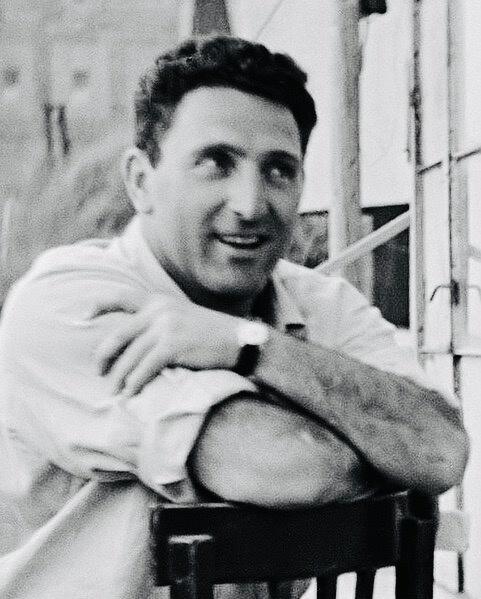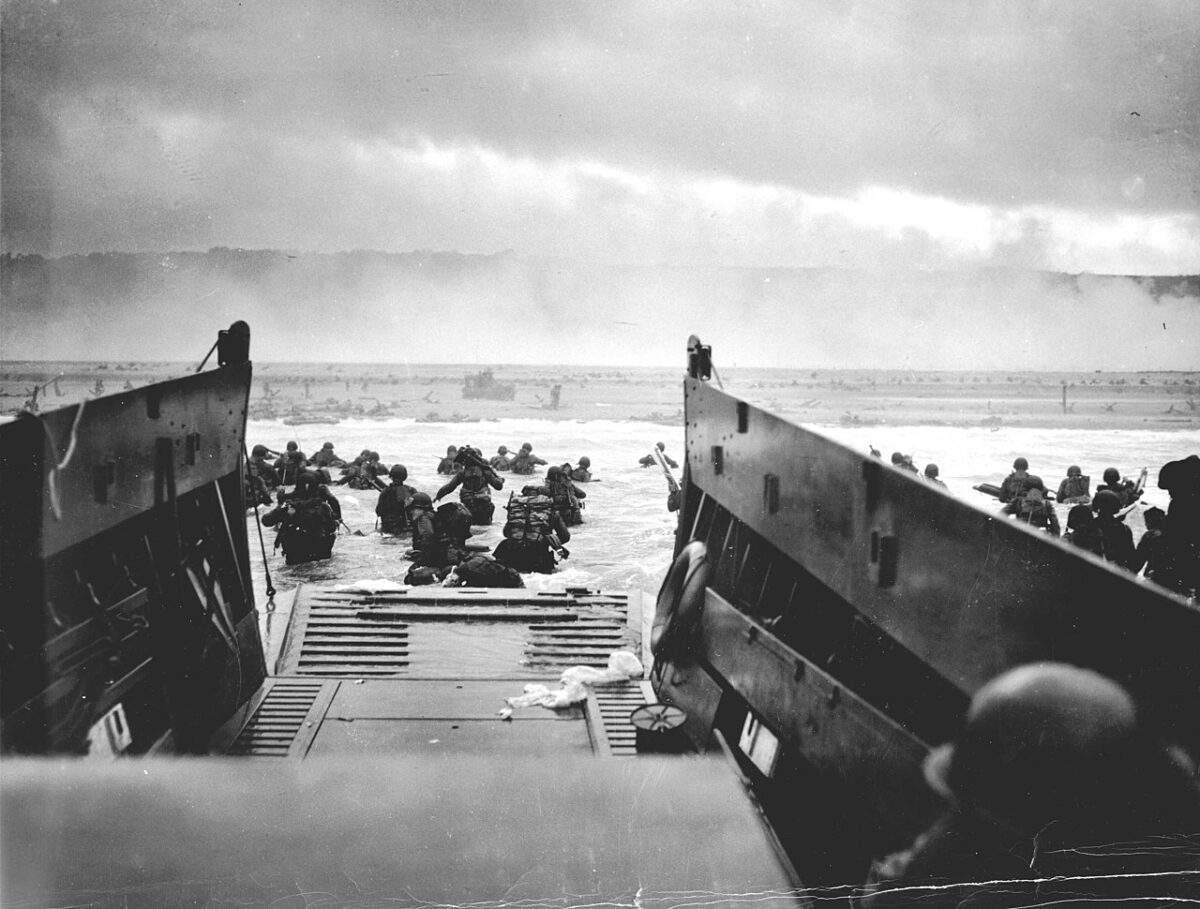They were the ordinary heroes who turned the tide of World War II against Nazi Germany.
Wading ashore in the surf at Normandy on a grey and gloomy day on June 6, 1944, thousands of Allied troops stormed seemingly impregnable Germany defences. Their mission was to pry loose France from Nazi occupation.
More than 4,400 American and Allied soldiers in a force of some 160,000 troops were killed on the first day of combat, in what would be the greatest sea-borne invasion in history.
During the course of the Normandy campaign, which resulted in the liberation of France, 73,000 Allied soldiers were killed and 150,000 were wounded. It was a high price to pay in blood and treasure, but it had to be done.
Adolf Hitler’s Germany, a genocidal regime that masterminded the murder and deaths of six million European Jews in the Holocaust, had to be resoundingly defeated and ground into dust.
If the massive Allied invasion had failed, Nazi Germany may well have survived, at least for another few years.
Although the amphibious assault was a success, it did not finish off the Nazi barbarians once and for all. Just six months later, in a last-gasp offensive, Germany launched the Battle of the Bulge, throwing 200,000 soldiers into ferocious battles. Sixty eight thousand Americans soldiers were killed and wounded in fending off the German attack, the last one of the war.
The young men who bore the brunt of the fighting knew they were laying their lives on the line for a sacred cause. They understood what was at stake and what lay ahead. They realized they might never return to their old lives, homes and families in the United States, Canada and elsewhere.
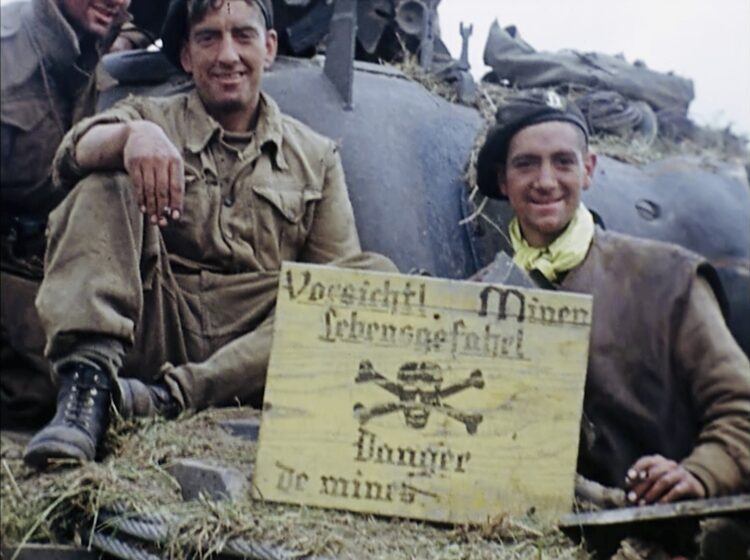
In battling the savage Nazi hordes, they fought to preserve freedom and decency in Europe. They were genuine heroes. And yesterday, now wizened old men in wheelchairs approaching their own deaths, they were rightly applauded, honored and revered as champions of democracy.
D-Day was certainly a turning point in the annals of a war that claimed millions of lives. Conspicuously missing from the solemn and poignant ceremony, which was attended by major Western leaders, was Russian President Vladimir Putin. He was not invited due to Russia’s “special military operation” in Ukraine, an aggressive imperialist attempt to redraw national borders by brute force.
He should have been in Normandy because the Soviet Red Army was largely instrumental in defeating Germany on the battlefield. By all accounts, the majority of German soldiers fell on Russian soil. Had Hitler not invaded the Soviet Union, his costliest mistake of the war, Nazi Germany might have scraped through. Having been left standing, Hitler would surely have continued with his rampage and German armies might have regrouped and launched fresh attacks, which would have been an unmitigated catastrophe, particularly for Jews.
Soviet military might battered and crushed Germany, but the Allies applied the final finishing touches during D-Day and the pitched battles in the months that followed.
The most comprehensive cinematic color record of the Normandy campaign was filmed by George Stevens, a Hollywood director whose distinguished movies range from A Place in the Sun and Giant to Shane and Swing Time.
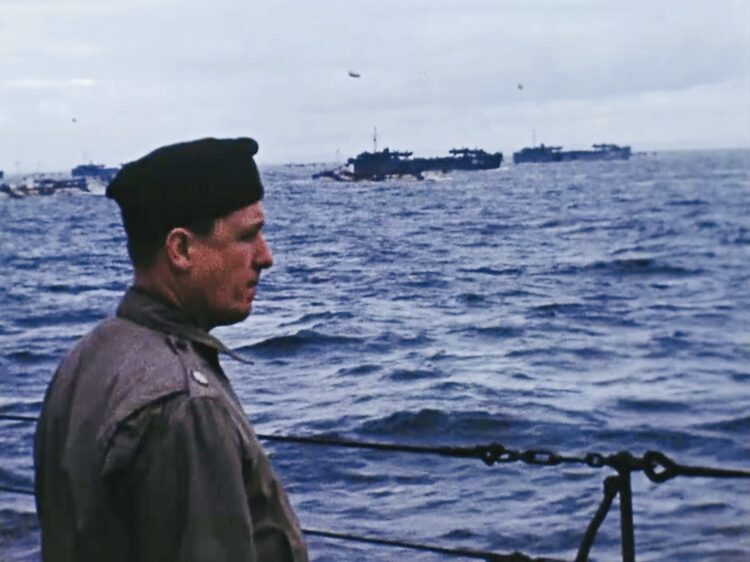
In 1942, shortly after the United States entered the war following the Japanese bombing of the U.S. naval base in Pearl Harbor, General Dwight Eisenhower appointed Stevens as head of the Signal Corps’ Special Motion Picture unit in Europe. Stevens assembled a first-rate group of cinematographers, sound people and writers to compile an official record of America’s participation in the war. They were known as The Stevens Irregulars.
During this interregnum, he also produced a private celluloid “diary” of the combat in vibrant color. For decades, these canisters of film lay undisturbed in his storeroom gathering dust. But after his death in 1975, his son, George Jr., spliced the footage together in George Stevens: D-Day To Berlin, a documentary that was released in 1994. Screened yesterday by the Turner Classic Movie channel, it is an amazing film of a momentous event.
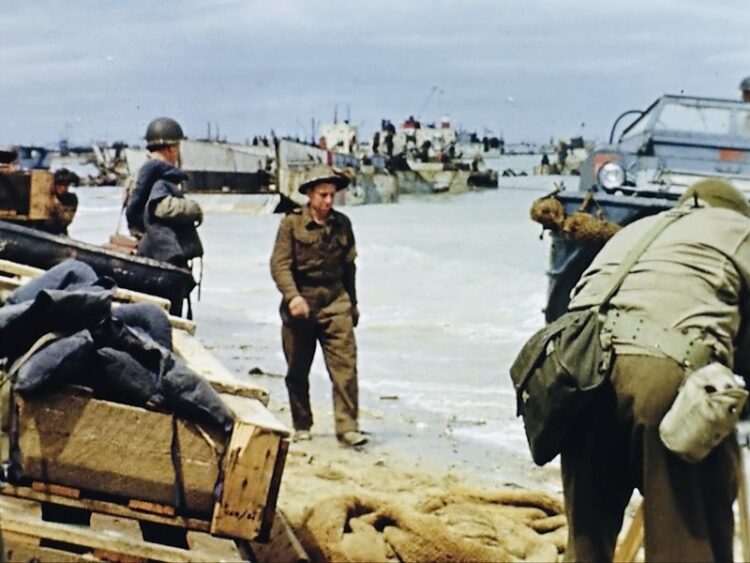
It is full of compelling moments.
Braving German fire, Allied soldiers land on the beaches of Normandy. As they advance further into occupied France, they face German landmines, stumble upon rotting corpses and smell the decomposing odor of death, witness a devastated landscape of demolished buildings in one town after another, and imprison German soldiers who have surrendered.
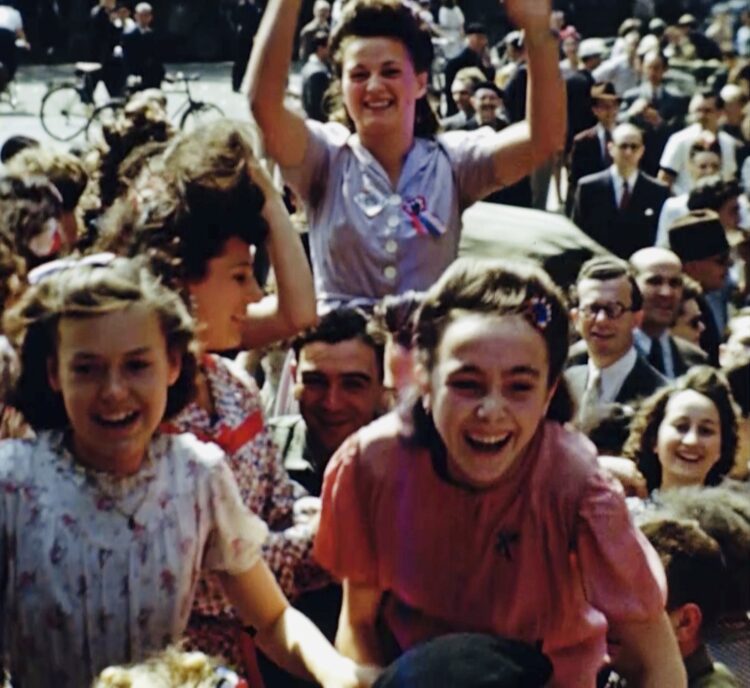
Stevens witnessed the liberation of Paris in August 25, 1944, and it unfolds in joyful scenes. French people greet the Americans on foot and in jeeps and armored personnel carriers. General Charles De Gaulle, a future French president, mingles with crowds.
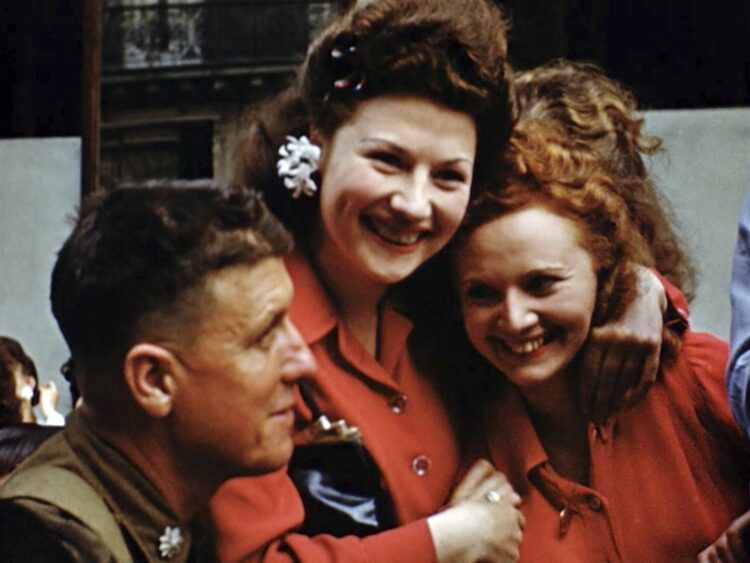
The Allies cross the Rhine River into German territory. Stevens and his crew document the capture of a secret German weapons factory in Nordhausen that employed slave laborers and manufactured V-1 rockets and the world’s first supersonic jets. They are also there when 320,000 German troops lay down their arms and American and Soviet troops triumphantly meet at the Elbe River in Torgau.
In the Dachau concentration camp, they see hundreds of prisoners and mounds of naked dead bodies. This ghastly sight unnerves Stevens. “You just want to hate all Germans at this time,” he says in disgust.
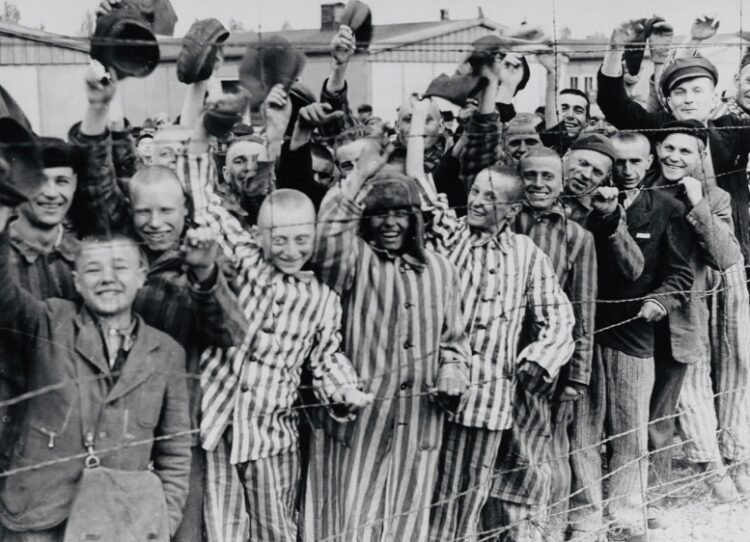
Later, a rabbi delivers the first religious service in the camp.
Steven’s footage from Dachau would be used at the Nuremberg war crimes trial to convict major Nazi officials.
As the war draws to a close in the spring of 1945, millions of displaced Europeans are on the move, hoping to return to their homes.
Having reached Berlin, Stevens gazes upon the ruins of the German capital.
With the end of the war, the Stevens Irregulars disbanded. Several of its members achieved personal fame. Cinematographer William Miller won Academy Awards for A Place in the Sun and The Diary of Anne Frank. Irwin Shaw went on to write the acclaimed novel The Young Lions.
As for Stevens, he resumed a career as a movie director that had shown signs of promise.
